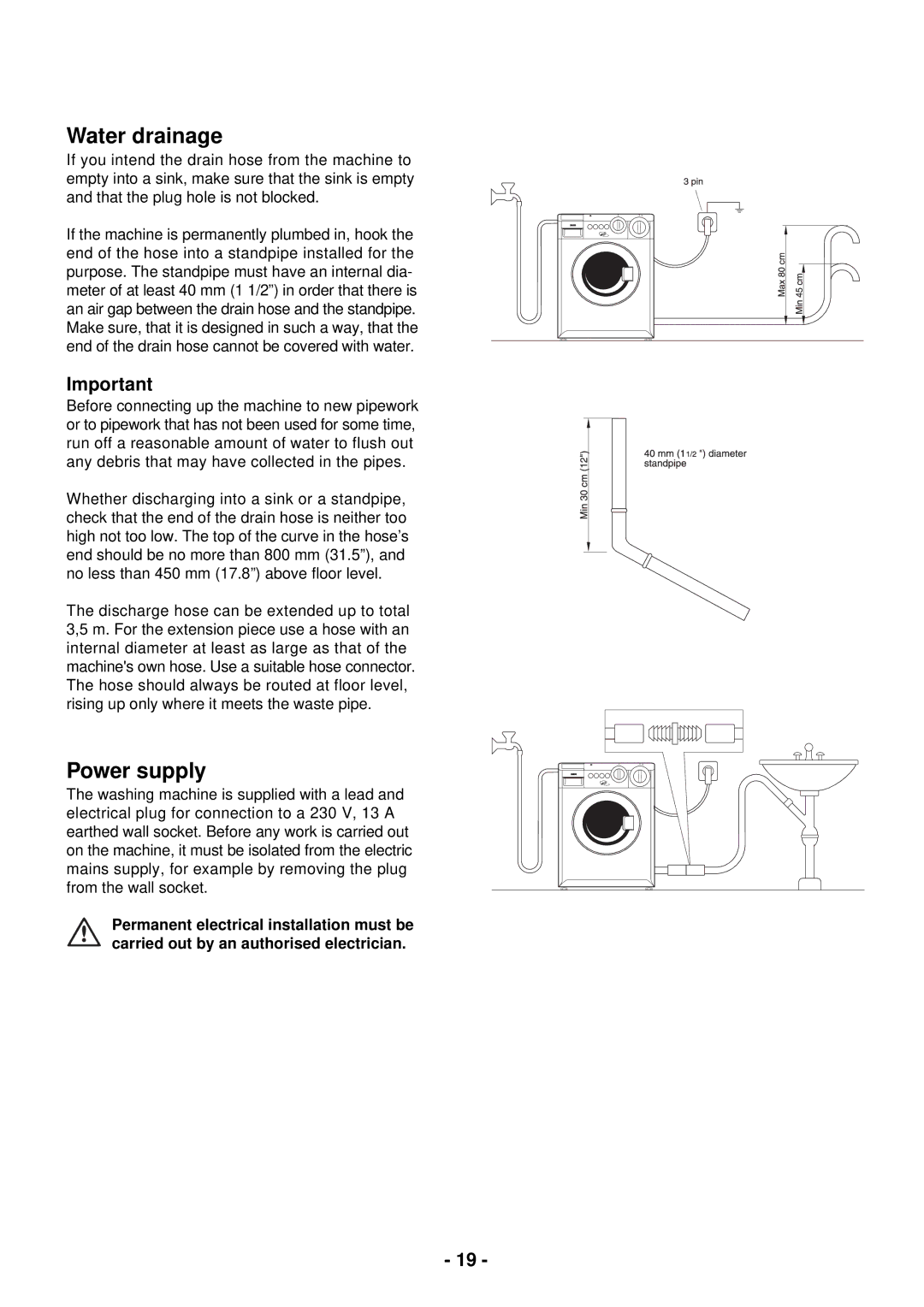FC 1200W specifications
Zanussi FC 1200W is a versatile and efficient washing machine designed to cater to the modern household's needs. With a focus on energy efficiency and advanced washing technologies, this model has quickly become a popular choice among consumers looking for reliability and performance.One of the standout features of the Zanussi FC 1200W is its powerful 1200W motor. This motor ensures that clothes are washed effectively while maintaining a low energy consumption rate. The washing machine is designed to reduce water usage without compromising wash quality, making it an eco-friendly option for those looking to minimize their environmental impact.
The FC 1200W boasts a variety of washing programs tailored to different fabric types and soiling levels. Whether you're washing delicate fabrics, heavily soiled clothes, or everyday laundry, this machine has a program to suit your needs. The quick wash option is particularly appealing for busy households, allowing users to clean lightly soiled clothes in a fraction of the time typically required.
Another significant characteristic is its spin speed of up to 1200 RPM. This high spin speed ensures that clothes come out of the washing machine drier, reducing the time needed for drying and enhancing overall efficiency. Additionally, a variable spin speed option allows users to adjust the spin depending on the fabric type, further protecting delicate items from damage.
The Zanussi FC 1200W is designed with user-friendly features. Its intuitive control panel includes a clear display and straightforward dial, allowing users to easily select their desired washing program. The delayed start function is another value-added feature, enabling users to schedule their washes at their convenience, taking advantage of off-peak energy hours.
Safety is also a priority for Zanussi, with features like a child lock that prevents accidental operation by children. The machine is built with durable materials, ensuring longevity and reliability even with regular use.
In summary, the Zanussi FC 1200W is a feature-rich washing machine that combines efficiency, versatility, and user-friendliness. With its powerful motor, diverse washing programs, high spin speed, and attention to safety, it stands out in the competitive appliance market, making it a smart choice for families and individuals alike. Whether dealing with everyday laundry or special care items, the FC 1200W promises to deliver consistently excellent performance.

